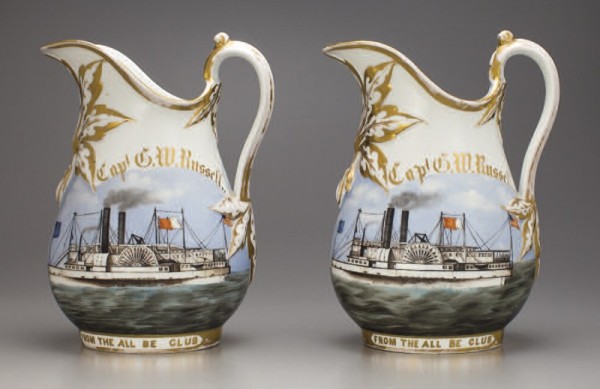
Presentation pitchers, attributed to Limoges, France, 1855–1859. Porcelain, enamels, and gilt. H. 11 1/2". Gilt inscriptions: on steamer Louisiana “Capt G.W. Russell”; around the foot rim: “FROM THE ALL BE CLUB” (Private collection; unless otherwise noted, all photos by Robert Hunter.) The commission of the pitchers dates to 1859. This view shows the enameled decoration.

The reverse of the pitchers illustrated in fig. 1, with the enameled decoration of the brig James B. George. Around the foot rim is the gilt inscription: (left) “GEO. W HERRING. ROBERT COOK”; (right) “A. J. GEORGE. GEO. M. BOKEE”
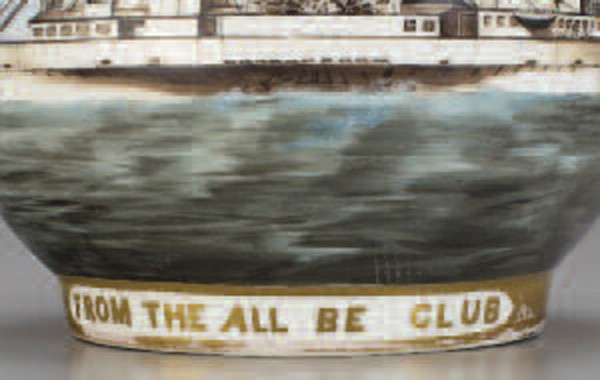
Detail showing the inscription on the foot rim of the pitchers illustrated in fig. 1: “FROM THE ALL BE CLUB” in gilt block letters.

Detail of the inscription on the foot rim of the pitcher illustrated on the left in fig. 2

Detail of the inscription on the foot rim of the pitcher illustrated on the right in fig. 2.
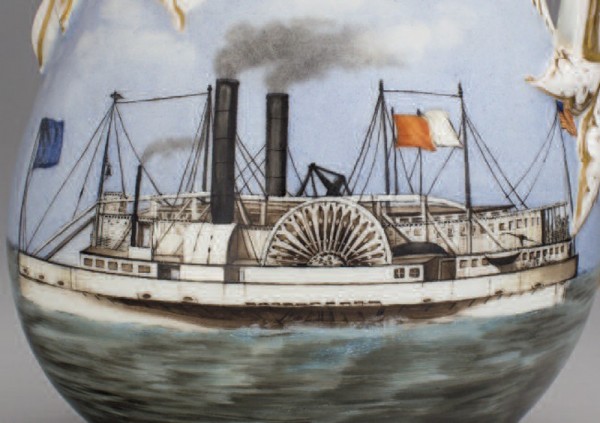
Detail of the steamship Louisiana on one of the pitchers illustrated in fig. 1.

Detail of the brig James B. George on one of the pitchers illustrated in fig. 1.

Detail of the inscription on the bow of the brig. Although the inscription reads “J. B. GEORGE JR,” no evidence for this exact name exists, the closest being James B. George, of which in 1859 Captain George W. Russell was a co-owner.
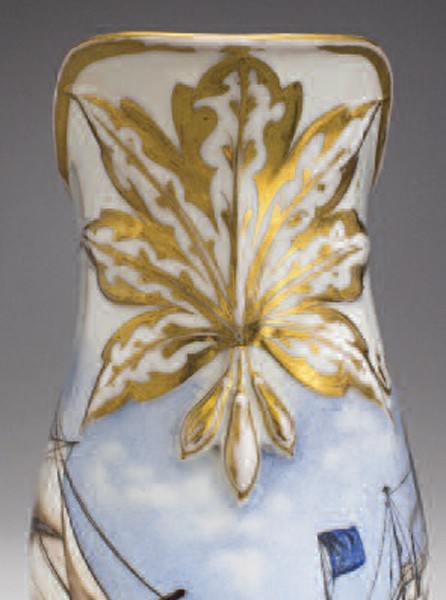
Detail of the molding below the spout of the pitchers illustrated in fig. 1. The molding takes the form of a fig leaf with fruit highlighted in gilt.
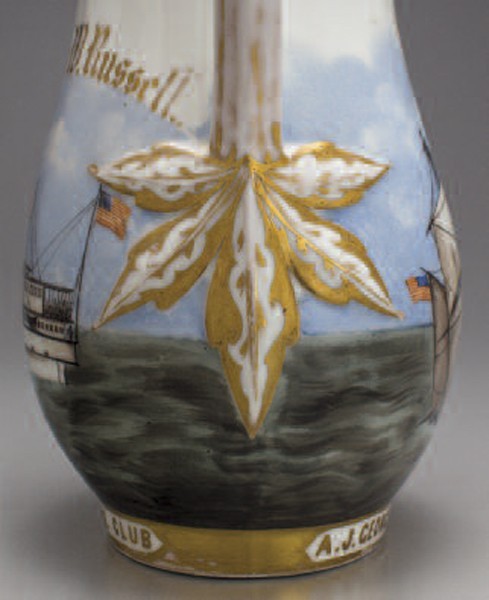
Detail of the molding of the handle terminal of the pitchers illustrated in fig. 1. The molding takes the form of a fig leaf.

Plate, France or Germany, decorated by Rudolph Lux, New Orleans, Louisiana, 1868. Porcelain, enamels, and gilt. D. 8 7/16". Inscribed: “Sam Montgomery / Master” (Courtesy, The Bayou Bend Collection, museum purchase funded by the Houston Junior Woman’s Club.) The steamer is named after the “Celebrated Horse” Dexter, immortalized in an 1867 Currier & Ives print, The King of the World.
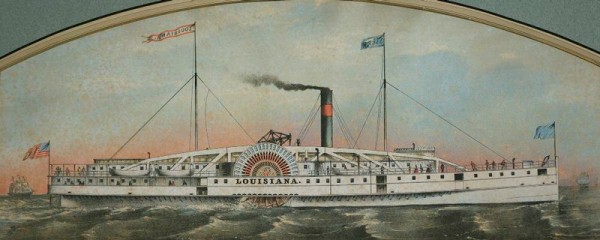
Louisiana, unidentified artist, 1850s. Lithograph. 7 1/2" x 19". (Courtesy, The Mariners’ Museum.)
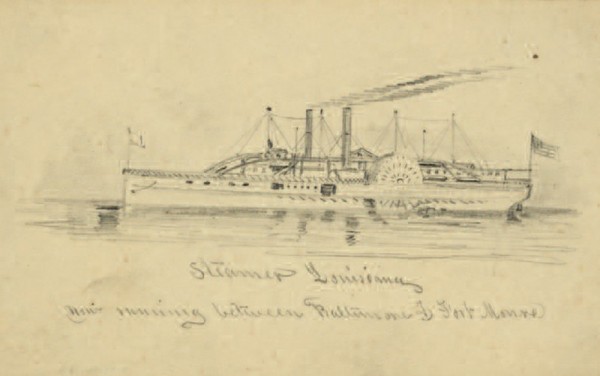
Alfred Rudolph Waud (1828–1891), Steamer Louisiana now running between Baltimore & Fort Monroe, 1861–1865. Pencil drawing on paper. 3 3/8" x 5 3/8". (Morgan collection of Civil War drawings, Library of Congress Prints and Photographs Division, Washington, D.C.; available online at https://www.loc.gov/resource/ppmsca.21373/)

Album quilt, American, Baltimore, Maryland, 1852. Cotton, velvet, silk; silk and/or cotton embroidery threads, ink. 89 3/4" x 88 1/4". (Courtesy, The Baltimore Museum of Art: Purchase with exchange funds from Gift of Edith Ferry Hooper, The Aaron Strauss and Lillie Strauss Founndation, and Mrs. Frank Kent, and Bequest of Alfred Duane Pell, BMA 1971.36.1.) Presented by the friends of Captain George W. Russell. Designer: Attributed to Mary Simon (née Heidenroder.)

Detail of the album quilt illustrated in fig. 14.
